
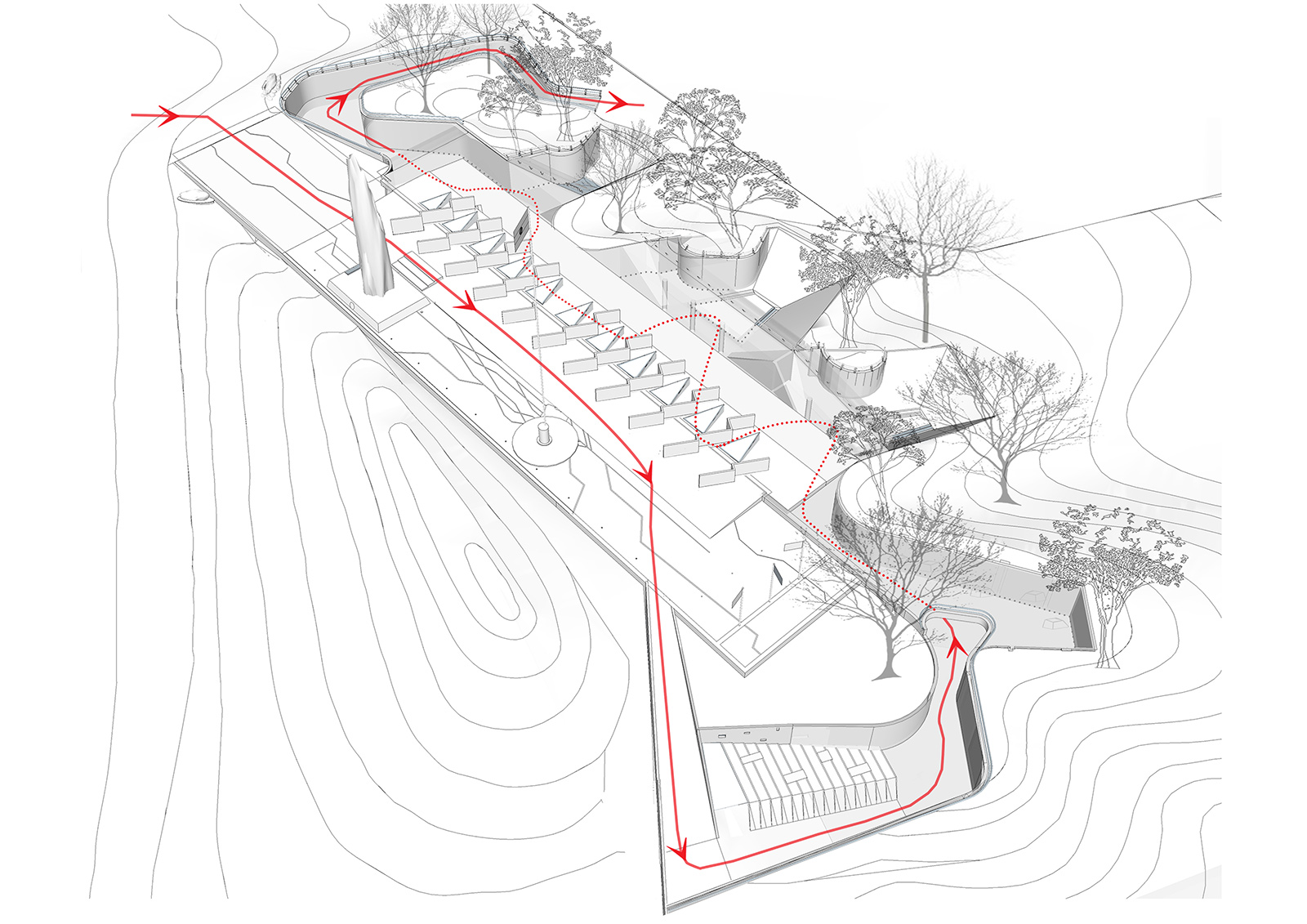
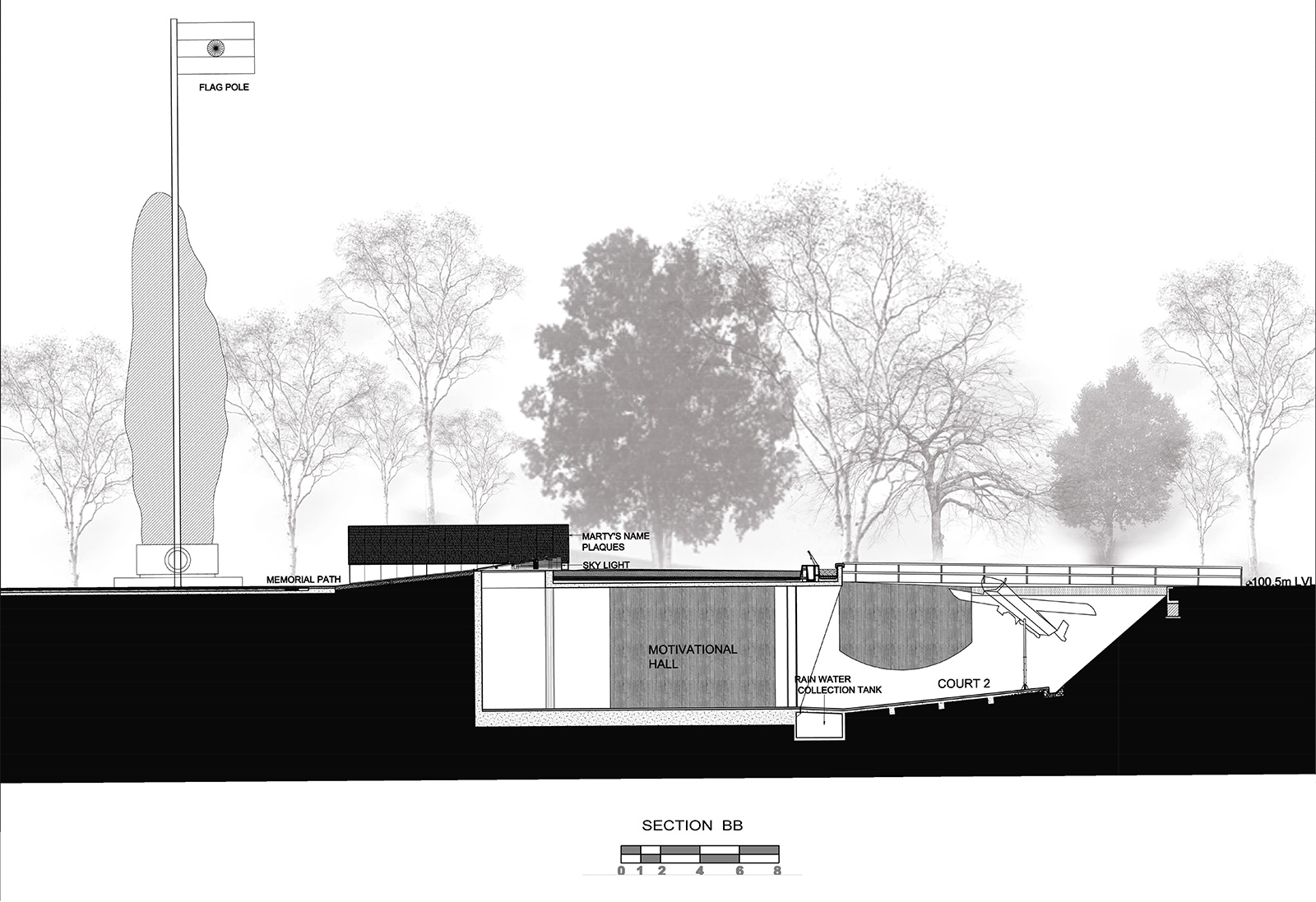
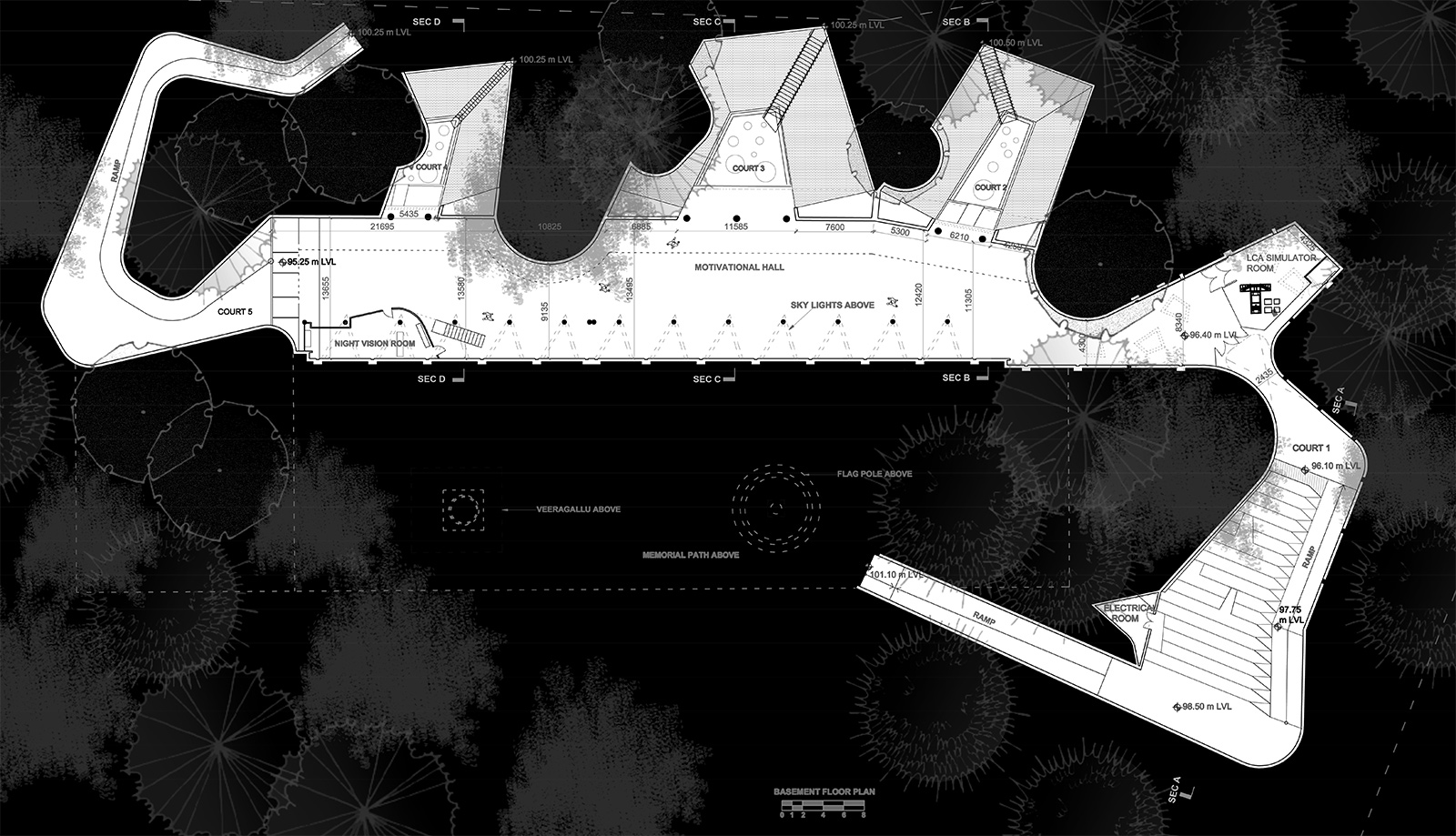
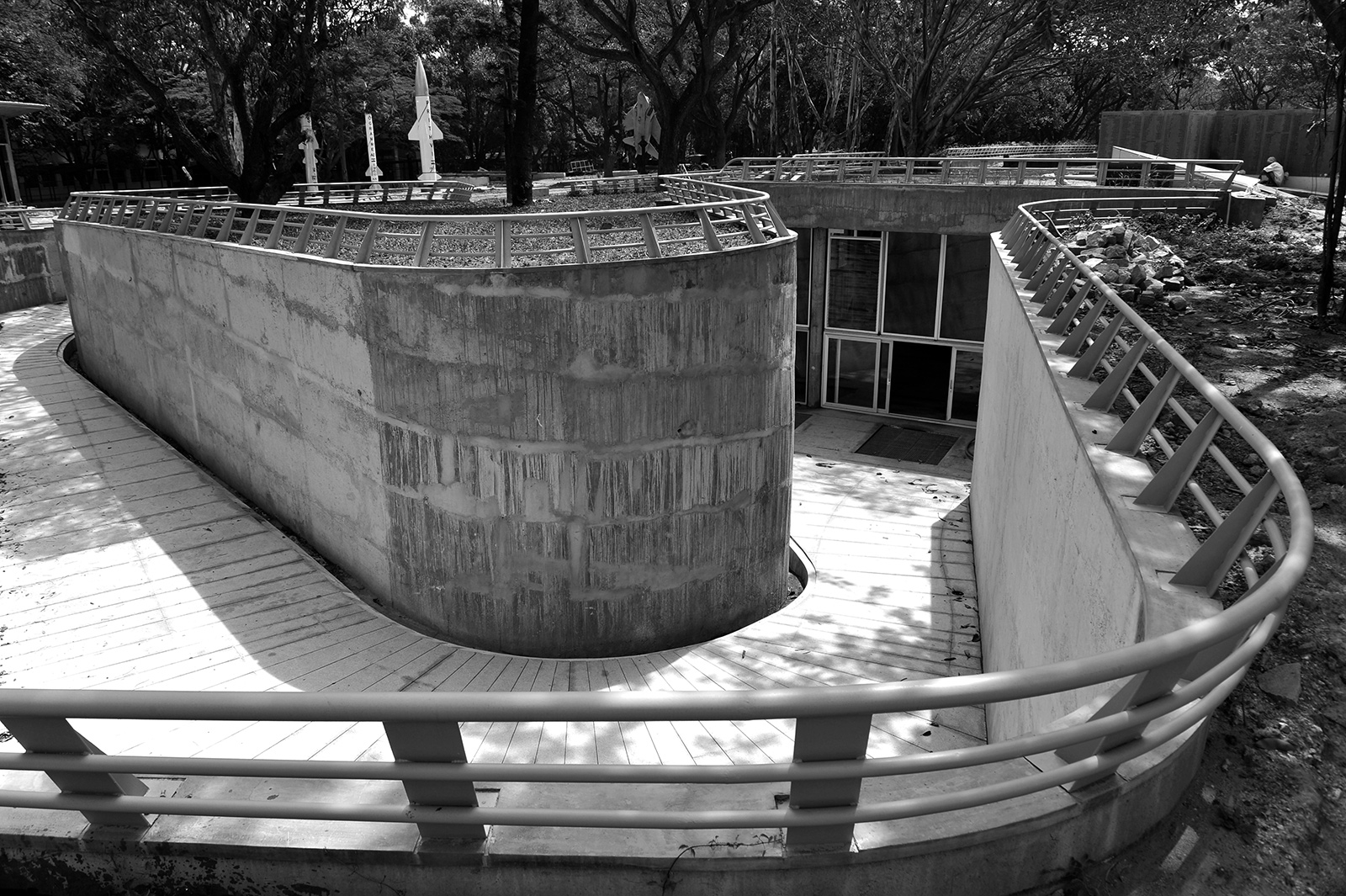
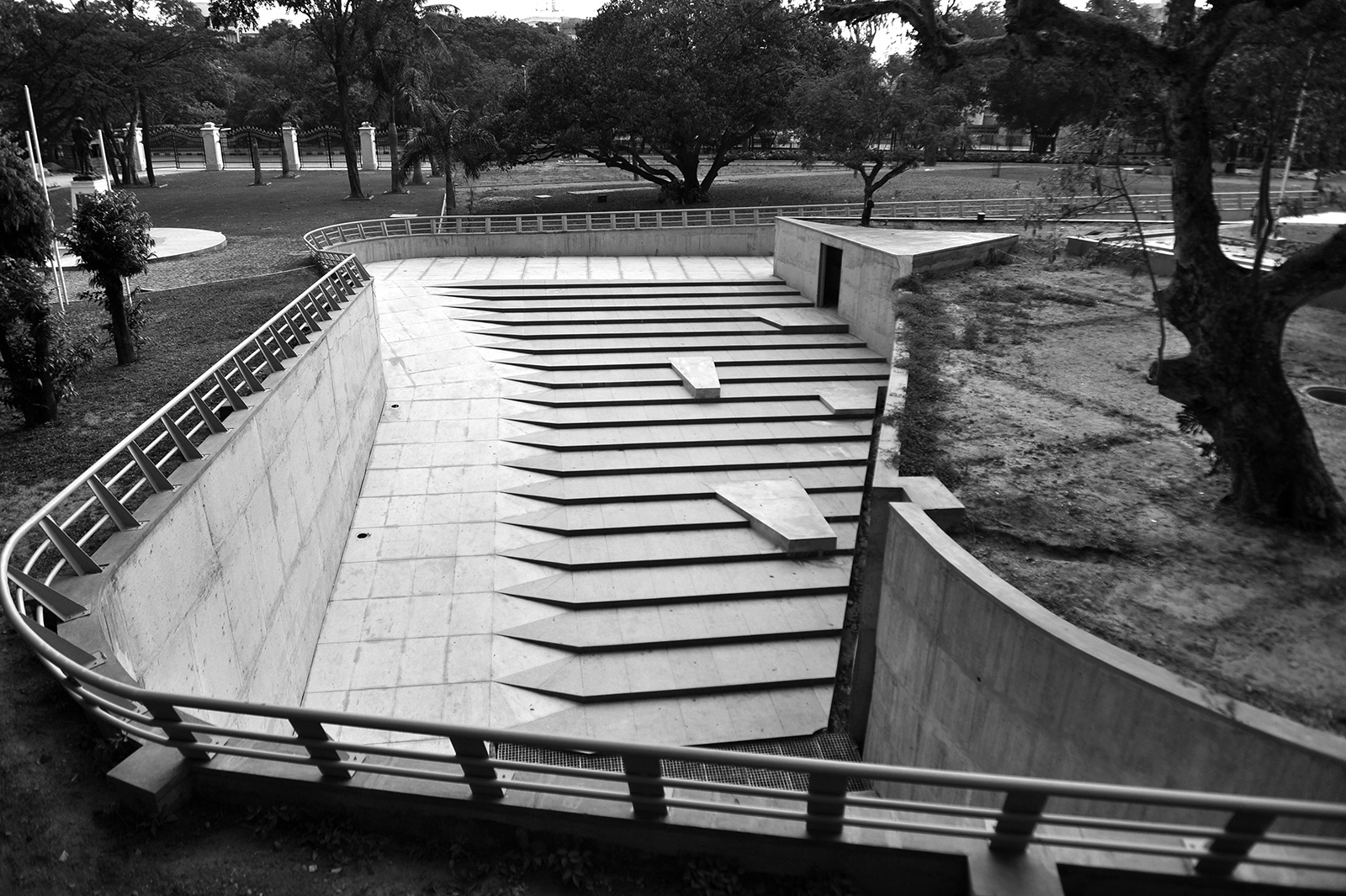
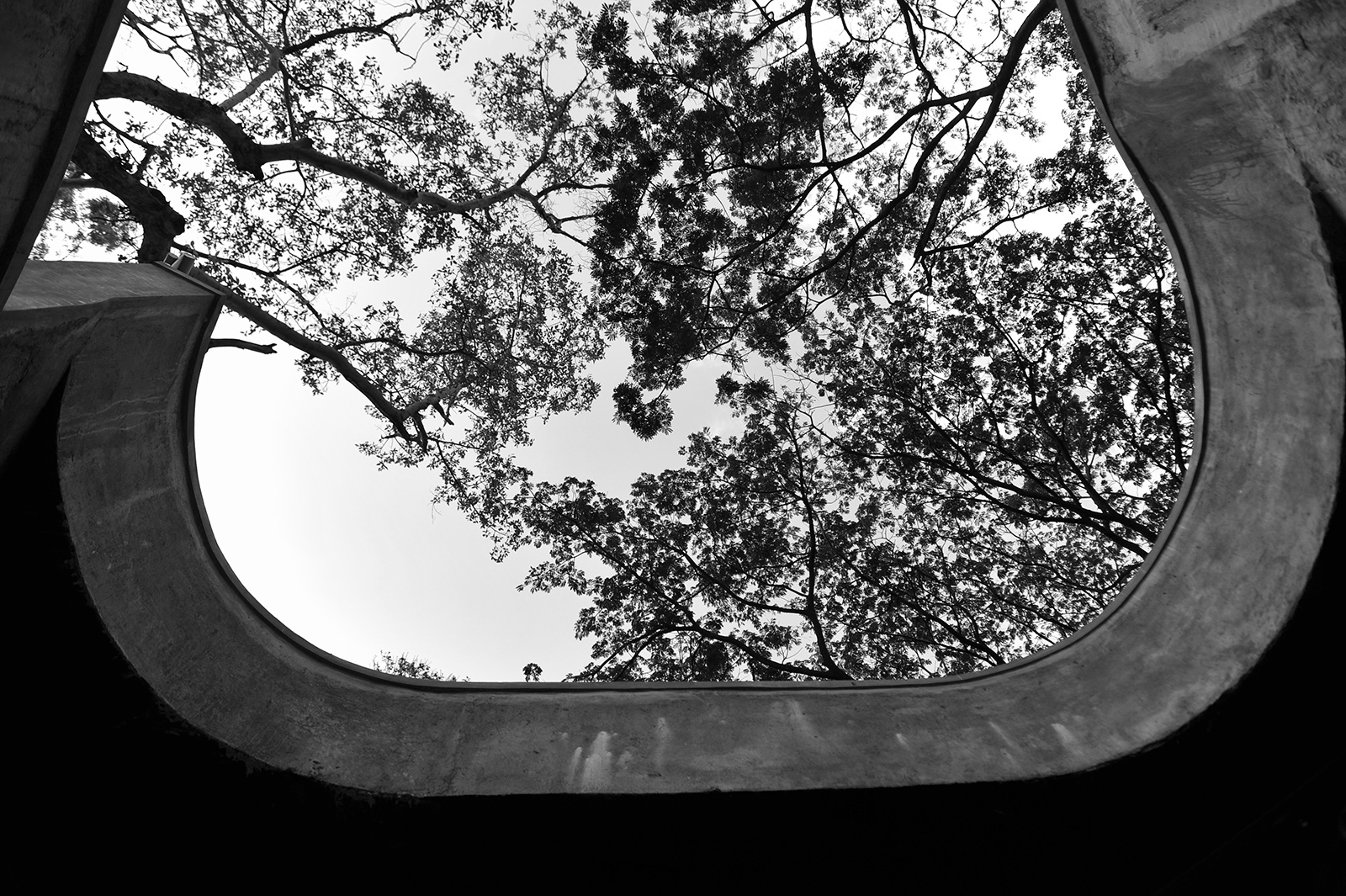
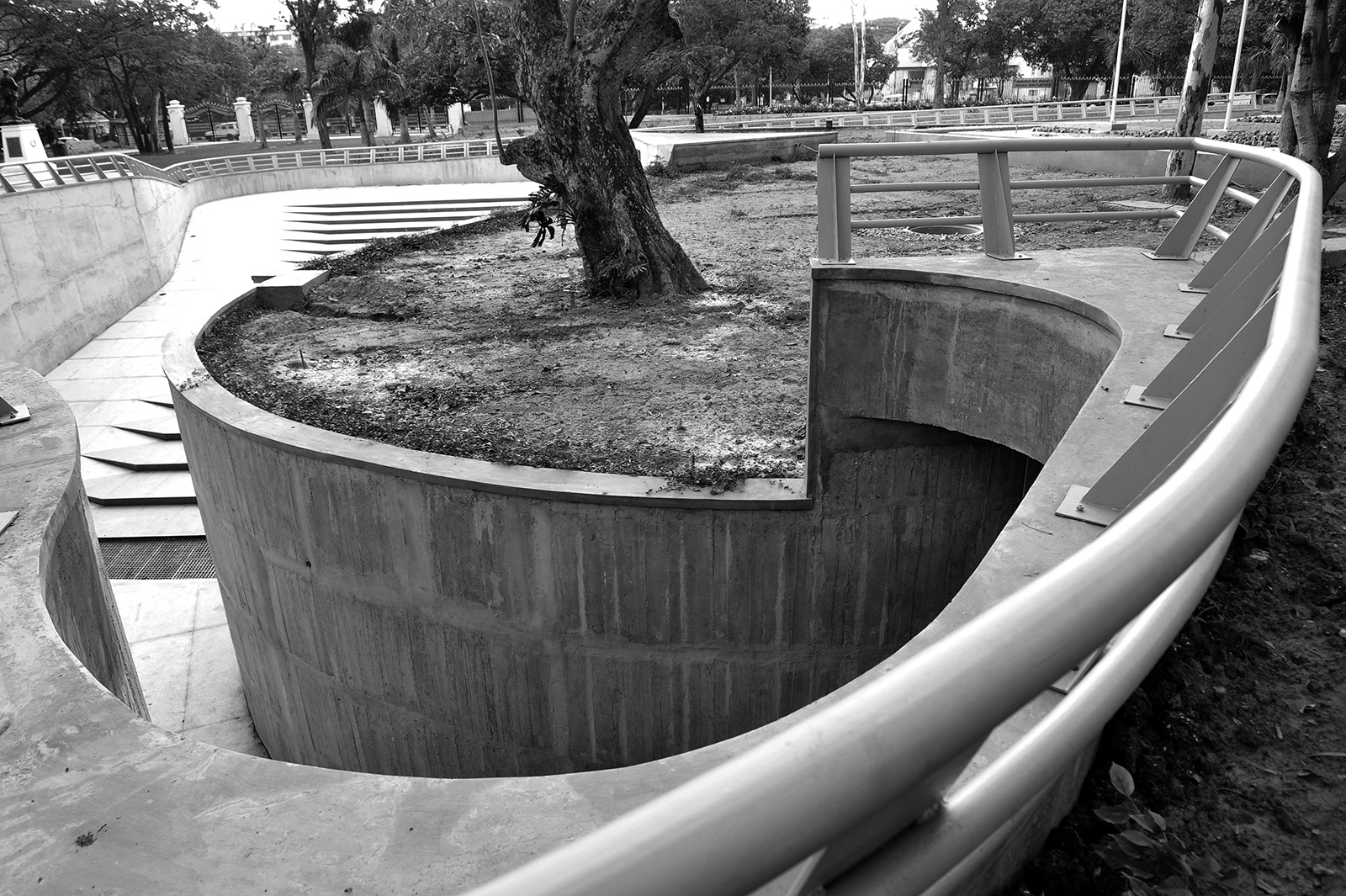

RASHTRIYA SAINIKA SMARAKA - NATIONAL MARTYR’S MEMORIAL, BENGALURU, INDIA
Location: Bengaluru, Karnataka, India Name of firm: Mathew & Ghosh Architects, Bangalore Client: Bangalore Development authority Year of completion: 2012 Architects: Nisha Mathew Ghosh + Soumitro Ghosh Consultants: Structural – B L Manjunath, Electrical & PHE – Yash consultants Contractors: K Damodar & co Site area: 26580 sq m approximately Built area: 1300 sq m approximately Photograph credits: Mathew & Ghosh Architects
Adrian Forty has written extensively on the 'non-memorial' speaking about the materiality of monuments can be seen to elicit a particular collective mode of remembering which shapes the consumption of the past as a shared cultural form of memory.
Marking the landscape with a place to remember those who lost their lives in wars, or in the act of maintenance of peace for the country after 1947 which marks the Indian Independence on the 15th of August.
The Rashtriya Sainika Smaraka, Bengaluru is located on a central road of the city, close to the Karnataka State Governor’s residence, the site gains visual prominence amidst busy thoroughfares. The Memorial is conceived as place of quiet remembrance and homage. This is a primordial landscape gesture to create a ritual path within the forest. Here, the ceremonial path in the tree covered land (whose exact alignment is determined by the movement of the sun and the effort to save every tree), is embedded in the earth to create an underground museum – display of histories and memorabilia of the lost lives.
The project seeks by the absence, to be nothing more than that primordial ceremonial path in a forest clearing as an expression of honour to the martyr's and their memory.
The ceremonial path of commemoration begins adjacent to a series of plaques with the physical marking of 21,763 martyr's names and proceeds into an underground memorial hall that houses information of the selfless and brave missions undertaken by the martyr’s and ends at a tall national flagpole beside the ‘Veeragallu’ (a symbolic stone that marks the heroic death of a warrior in battle in Karnataka), and finally leads downwards to a hall/ museum.
Being one of the first projects of this nature undertaken by the state Government, it aims at recognizing the servicemen of the country.
With the intent of giving back the forested city, the built form of the memorial hall was designed to disappear into the ground like a bunker. The structure below ground meanders between the roots of the trees (324 trees are at site, and only 4 eucalyptus trees were removed to accommodate the structure)
The Entrance to the memorial hall through open Court 1 with its amphitheatre like steps is the first of 5 courts that serve to provide ventilation and daylight into the underground structure. In addition to these open courts, triangular skylights animate the space through the day. The materiality of this space makes allusions to a concrete bunker with its raw form finished concrete.
Concrete and the nature of this material and its casting process is still manual as much as in 1947 and this lies underneath in the memorial hall in its raw cast finish. The shadows of the trees above in the precinct and insulation from the soil above the hall also makes the hall into a world away from the traffic and noise. A reflective space that views the ground above and trees from the viewpoint of being well below the roots of the trees. The hall is a simple structure like a box which is punctuated by the underground / sunken courtyards and structured through its more than 100 meters length by natural light.
This project has different areas that link together all linked by the path which completes the larger journey/narrative of the memorial.

